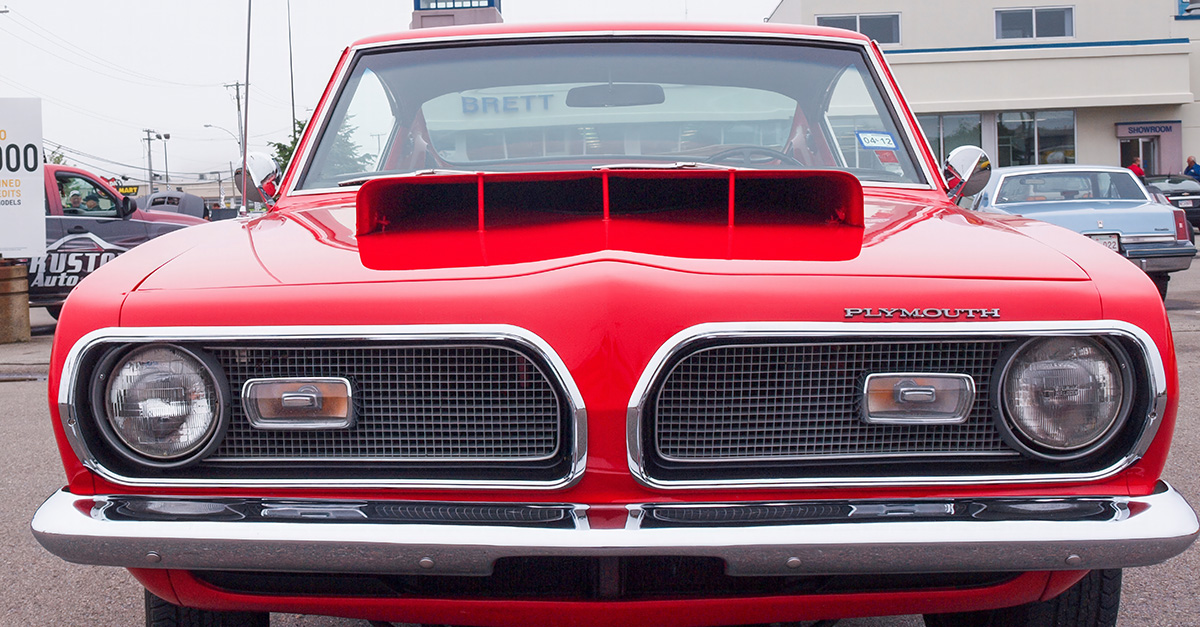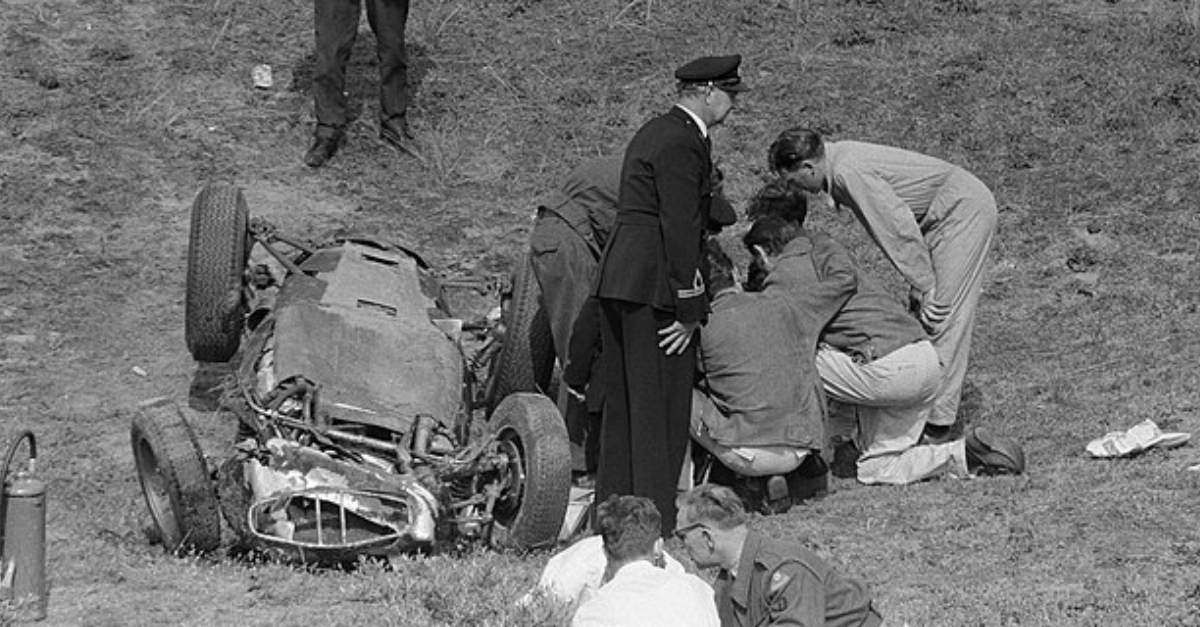Boomer Garages Feel Like Time Capsules
Most Boomers never cleaned out their garages for fun. Things just stayed, and over time, those quiet corners filled with old tools and the kinds of supplies that once made perfect sense to keep around.

Coffee Cans Full Of Screws
On a shelf in the back, there's often a row of old coffee cans—rusted on the rim and heavy with screws. Boomers kept them after the coffee was gone because they would come in handy. This habit came from thrift and decades of home repairs.
Old License Plates
Look above the workbench or near the garage window, and you'll spot metal plates from old cars, dusty and slightly bent. Until the 1980s, most states issued new ones yearly. Boomers saved them, not for value, but because each plate marked a memory tied to a vehicle they had driven.
WD-40 Spray Cans
WD-40 hit the stores in 1958 and quickly became a go-to fix. Boomers used it to silence squeaks and loosen rusted parts. It still sits on a shelf, usually with a cracked cap and blue-stained nozzle. The can hasn't changed—and neither has its place.
Fishing Rods From The 1970s
Fiberglass rods lean quietly in garage corners, reels stiff with age but intact. In the 1970s, affordable rod-and-reel sets became a staple of birthdays. Brands like Zebco and Shakespeare were everywhere. Boomers rarely tossed them out. They kept peaceful memories of lakeside mornings and familiar weekend traditions.
 Fishing Rod Storage on Garage Door by Roy Bertalotto
Fishing Rod Storage on Garage Door by Roy Bertalotto
Pegboard Tool Walls
Every tool has its place, mapped like a puzzle on the wall. Pegboards gained popularity in the 1950s, mainly due to the influence of Popular Mechanics and the DIY culture of the time. Boomers embraced the system. It made tools easy to spot and gave their workspaces a sense of utility.
Paint Cans With Dried Lids
Stacked in corners or hidden under shelves, old paint cans remain in place for years. Boomers kept them after home projects, with the expectation of doing touch-ups someday. Many contain latex paint from the late 1970s, which dries out fast when lids aren't sealed tightly.
Jumper Cables In A Knot
Before portable jump starters, jumper cables were the only solution when a battery died. Boomers kept a set in every trunk, always prepared for trouble. Even now, many of those tangled cables lie coiled in garages, dusty yet reliable after more than 20 years of disuse.
 Shakespeare at English Wikipedia, Wikimedia Commons
Shakespeare at English Wikipedia, Wikimedia Commons
Glass Jars Of Bolts
The clear glass helps. That's why Boomers reused pickle jars and mason jars for bolts and washers. Some still carry masking tape labels from the 1980s. Before plastic drawer systems became common, these jars lined garage shelves, each holding pieces no one dared toss.
Garden Gloves With Cracked Palms
They lie stiff in baskets or hang on wall hooks; their leather palms curled and dry. Boomers used them year after year, and even worn ones got saved. Brands like Wells Lamont were standard in the 1960s. Replacing them wasn't the norm unless they fell apart.
National Geographic Stacks
The yellow borders peek from dusty piles along garage walls. During the 1980s, National Geographic reached over 10 million homes. Boomers saved every issue, drawn to the photos and maps. Most stacks now go unread, but they remain—neatly arranged like someone still plans to flip through them.
Manual Jack And Tire Iron
Boomers kept their original jack and tire iron after every car upgrade, just in case the next one didn't come with them. Long before cell phones, they learned to change flats themselves. Many of those kits remain today under mats or deep in trunk pockets.
Portable Work Lights
Clamp-on work lights lit basements and garages across the 1960s. Boomers used them for engine checks and attic repairs. Their dented cages and knotted cords still hang in garages. Some sit coiled on the floor and give off a faint hum when plugged in today.
Push Reel Lawn Mower
You won't hear it until it starts cutting. These reel mowers, powered by nothing but muscle, lined sheds before gas-powered engines took over. Boomers often kept theirs as backups or for edge jobs. Brands like Scotts still make them, and the older ones still cut well.
 6428W Digital Art, Shutterstock
6428W Digital Art, Shutterstock
Garage Fridge
A second fridge often hums behind the garage door, typically one that was moved from the kitchen after an upgrade. Boomers keep it stocked with drinks or party trays. Though less efficient than newer models, it stays for convenience and adds a familiar comfort to the space.
Manual Grass Clippers
The snip is slow but exact. Long before string trimmers, boomers trimmed lawns with these handheld shears. Edging the walkway took time and grip strength. Rust may line the blades now, but many pairs still work—and still sit on hooks near the garden tools.
 Valeriy Lushchikov, Getty Images
Valeriy Lushchikov, Getty Images
Workbench With A Vise-Grip
A heavy vise bolted to a wooden bench often marks the heart of a boomer's garage. These workbenches saw decades of sharpening blades and sanding boards. Even if unused today, the vice usually stays, outlasting everything else it once held in place.
Christmas Lights In Grocery Bags
Tangles of old lights sit in plastic grocery bags, sometimes untouched for decades. Boomers packed them away after holidays, bulb by bulb, without boxes or reels. Most are incandescent strands from the 1970s or 1980s, kept despite missing bulbs or wires that have worn thin with age.
Spare Fan Belts
Boomers often bought spare fan belts after roadside breakdowns and stored them in cabinets or hung them on nails. Many are still in their original packaging. They rarely fit modern engines today, yet they remain saved just in case an old repair becomes necessary again.
Wood Cabinets With Mystery Drawers
Some garage cabinets date back to the 1950s, often built by hand or relocated from old kitchens. Inside, the drawers hold bits of broken tools. Labels are rare, so boomers rely on habit or memory. Many drawers stay shut, packed with long-forgotten hardware.
Old Radios
Long cords trail from dusty shelves and lead to radios that still hum to life. In the 1960s, GE and Panasonic built durable models with analog dials. Boomers keep them plugged in, so talk shows and ball games would continue. Many still catch local stations with surprising clarity.
Plastic Buckets Of Hardware
They sit near workbenches, heavy with rusted nails and old tape. After painting, Boomers repurposed the buckets as catch-alls. Most never got sorted. Even now, the mess inside feels useful, waiting for the next moment something might need fixing or rigging.
 Dmitry-Arhangel 29, Shutterstock
Dmitry-Arhangel 29, Shutterstock
Car Wax Kits
Did you know Boomers grew up during a time when cars reflected personal pride? Brands like Turtle Wax and Simoniz became staples in home garages. Though the labels have faded, many kits remain, still used as part of a lasting habit of keeping cars clean and polished.
Tangled Extension Cords
Boomers relied on long extension cords before battery-powered tools became the norm. Today, those same cords hang from hooks or gather in dusty piles. Often twisted and unwound, they are still used during quick fixes, despite safety warnings printed clearly on their aging rubber casings.
Sears Folding Workbench
The Sears Workmate was a folding workbench first sold in the 1970s, designed to clamp and steady workpieces. Baby Boomers used it for home repairs and minor fixes. It is folded flat for storage, yet many still keep one handy in garages decades after purchase.
Mason Jars Of Random Parts
Baby Boomers used mason jars to store fuses or switch covers, sometimes sorting them by size, sometimes not. These transparent jars made it easy to see inside. Many still line shelves today, dusty but ready, because they never made it back to the kitchen where they began.



























